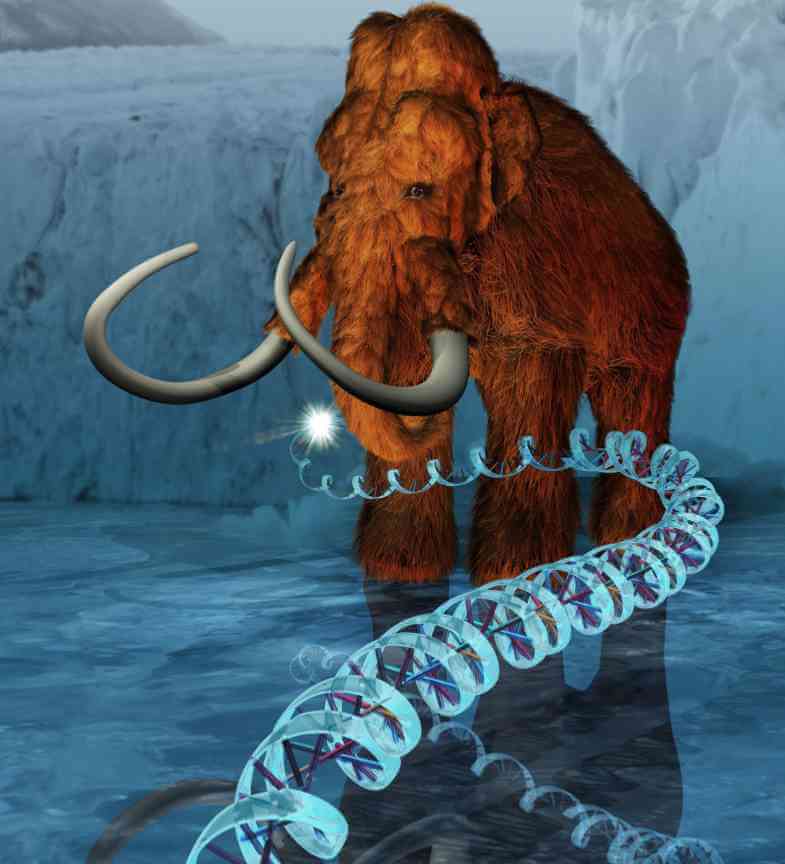According to a study published in the journal Nature, researchers have recently extracted and mapped the oldest DNA extracted from two molar teeth that they found buried in the Siberian permafrost. The molars upon which a rigorous research was conducted have brought some astounding facts.
Siberian mammoths have always been a subject of awe in the scientific community. Traces related to them pose a massive potential to throw light upon various climatic and geological events that took place during the ancient era. A recent analysis regarding their DNA is believed to reveal some information that will help scientists to study how Earth behaved in those primitive days.
Mammoths are known to travel large distances in a snow-covered region in Siberia. One million years ago, when these mammoths were traversing, living, and breeding, their teeth and tusks were preserved in the frozen land of Siberia after their death.
Mammoth’s molar gives a glimpse of evolution
According to a study published in the journal Nature, researchers have recently extracted and mapped the oldest DNA from two molar teeth that they found buried in the Siberian permafrost. The molars upon which rigorous research was conducted have brought some astounding facts. Following this, scientists have also revealed that the DNA of those molars is over one million years old. This is also claimed to be the oldest DNA that has been ever sequenced till now.
The oldest DNA that was earlier discovered was of the ancient horse which was 5,60,000 to 7,80,000 years old. As far as mammoth’s molars are concerned they are believed to come from two different species of the animal. The first one is expected to be of Steppe mammoths whose ancestors were Woolly mammoths called Krestove. The other molar is expected to come from an unknown species that thrived in Siberia 1.2 million years ago.
The woolly mammoths are believed to have bred with this unknown species almost 4.2 million years ago. Once both the species bred, they gave birth to Columbian mammoth which then occupied the hinterlands of North America.
Determining the age of mammoth’s teeth
These ancient molar teeth of mammoths were found in the 1970s itself but it is only now that scientists are able to determine their ages. The team adopted the technique where they looked for the rocks surrounding those molars in the region. From there they collected the deposit to determine the age of these teeth.
The rocks found around the molars of species one have had the age of around 1.1 million years to 1.2 million years while that of the rocks around the molars of the second species was of 5,00,000 years to 1.2 million years. As a procedural step, researchers have compared this age with the genetic sequence of the molars while analysing certain mutations that must have taken place over the course of time.
According to the study, mammoths diverted from the normal elephants 5.3 million years ago. So scientists have been calculating the mutations in order to estimate the time between the separation and mammoth’s birth. This method has yielded the age of these molars among which the first one namely Krestova is 1.65 million years old while the second one, Adycha is 1.34 million years old. Also, the third tooth that is called Chukochya is around 8,70,000 years old.
A significant breakthrough
Lately, scientists have also been focusing on determining the age of such fossils based on DNA methods instead of protein-based techniques as in cold climates, DNA is kept safe from degradation. After this discovery, scientists are looking forward to determine the age of fossils which are 2 to 2.6 million years older.
Conclusively, the research pertaining to the age of mammoth’s molars threw veritable light on how these species evolved to tackle the harsh Siberian weather as they developed shaggy hair, thermoregulation, hair growth, and white and brown fat deposits. On a wider level, the study also highlights the effects of climate change and the rise in sea levels during the ancient era.

